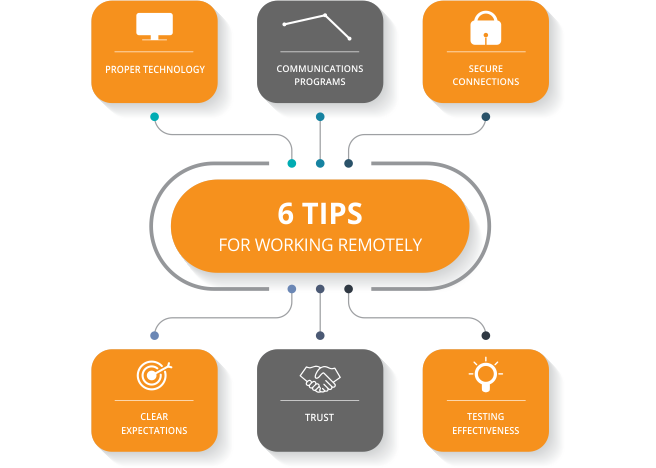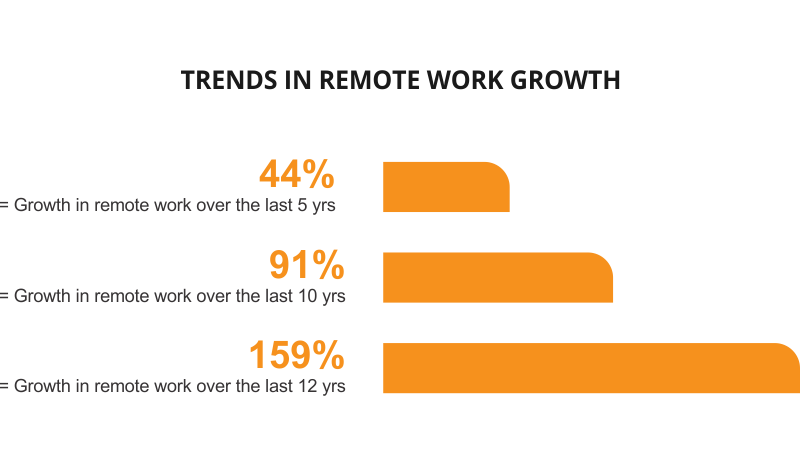
Michael Carnahan, Senior Director of Client Services, covers trends in remote work growth and methods for ensuring security measures stay strong, even from home in this white paper.
Watch the video to the right to learn more about the author, his paper’s key takeaways, and Vee Healthtek’ successful transition to a work-from-home model.
To discuss this white paper in more detail, please contact Michael using the information provided at the bottom of the article.
In just a few short months, the events of 2020 changed everything in the healthcare industry. When COVID-19 hit, it immediately raised issues that few experts could have forecasted.
In some hotspots, hospital capacity became a serious issue. In other areas, the lack of elective surgeries and other outpatient services led to significant revenue decline. In all geographies, hospitals had to look to alternative work scenarios. Our clients were faced with moving their workforce to a home environment and furloughing the rest. In these turbulent times, having an expert workforce readily available became a central issue. This was the case for a large children's hospital in the Midwest.
The client did not have extensive outsourcing experience and never offshored their work before Vee Healthtek. Working with us meant having to build significant initial trust. That trust was put to the test during the pandemic.
Like many others in the industry, we had to move our workers away from a central, secure location, a location where we had extensive IT security practices in place. This was a major selling point for this client. The issue was clear: how would we convince our client that we could provide the same world-class service without threatening their business, data, or revenue?
The hospital's Senior Director of HIM naturally had three major concerns about the pending move:
Because of the great relationship we’ve built and our track record, they allowed us to move our workforce to an at-home environment. Now, we had to prove we could do it.

It was a major undertaking. In a matter of days, we moved over 2,000 employees from central locations to a work-from-home environment. To bolster connectivity, we purchased and installed over 1,500 high speed hotspots for our employees. Best of all, we were able to do it while maintaining productivity and the highest standards of data security.
Part of our success was our culture. When you have the right team, they are willing to do what it takes to help your clients succeed; a culture that knows what success looks like. This was a culture that took our core beliefs of accuracy, competency, and teamwork to heart. Without that culture, we would not have been able to make the transition smoothly.
A large part of it, though, was the partnership with our clients. We understood what the client needed, and what its goals were. As a result, we were able to facilitate the organizational benefits of outsourcing through the turbulent times. We were able to pick up where the client’s internal staff left off. Vee Healthtek was “not only cheaper but was able to make the transition to home faster than we could,” said the Director of PFS.
The results have been impressive. The Children's Hospital didn't just keep up its productivity, but improved upon it. Vee Healthtek has improved on our already high Service Level Agreements in almost every area. The Senior Director of HIM said that they “are more secure knowing that we have the right team in place.”
That added capacity has allowed us to do even more for our clients. We're now able to take on additional work that might have presented because of COVID-19. No back logs and no missed billing deadlines give the client a leg up when patient volumes return to normal. All the while, we were able to uphold the highest possible standards of client service and performance as we strove to serve our clients better.
The move to work-from-home might just be permanent. In fact, new research recently shows that 84% of businesses will increase their remote work capacity even after the pandemic has passed. This type of move is not without its issues. In the same study, more than two-thirds of respondents were concerned with the cybersecurity risks of that move, with file and data sharing being the most concerning issue among many others.
And yet, the benefits continue to be tempting. According to one study, remote employees work, on average, 1.4 days per month more than their office-based counterparts. That's more than three more weeks per worker every year. Vee Healthtek has had the majority of our domestic staff working from home for years. So, we are happy our international staff has been able to realize the benefits and safety of our work from home model, while keeping the high standards our clients have come to expect from Vee Healthtek.
Our commitment to quality, security, and productivity transferred from our previous working environment to one that is almost entirely remote. By being able to keep up and even improve on productivity, we validated our client's trust. And the results will be positive for many years to come. Instead of adding to, we are taking away client complications. Instead of increasing costs, we are reducing them.
The result is a true success story. One that has built a relationship that will stand the test of time.
